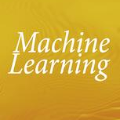
Predicting body fat can provide medical practitioners and users with essential information for preventing and diagnosing heart diseases. Hybrid machine learning models offer better performance than simple regression analysis methods by selecting relevant body measurements and capturing complex nonlinear relationships among selected features in modelling body fat prediction problems. There are, however, some disadvantages to them. Current machine learning. Modelling body fat prediction as a combinatorial single- and multi-objective optimisation problem often gets stuck in local optima. When multiple feature subsets produce similar or close predictions, avoiding local optima becomes more complex. Evolutionary feature selection has been used to solve several machine-learning-based optimisation problems. A fuzzy set theory determines appropriate levels of exploration and exploitation while managing parameterisation and computational costs. A weighted-sum body fat prediction approach was explored using evolutionary feature selection, fuzzy set theory, and machine learning algorithms, integrating contradictory metrics into a single composite goal optimised by fuzzy adaptive evolutionary feature selection. Hybrid fuzzy adaptive global learning local search universal diversity-based feature selection is applied to this single-objective feature selection-machine learning framework (FAGLSUD-based FS-ML). While using fewer features, this model achieved a more accurate and stable estimate of body fat percentage than other hybrid and state-of-the-art machine learning models. A multi-objective FAGLSUD-based FS-MLP is also proposed to analyse accuracy, stability, and dimensionality conflicts simultaneously. To make informed decisions about fat deposits in the most vital body parts and blood lipid levels, medical practitioners and users can use a well-distributed Pareto set of trade-off solutions.
翻译:暂无翻译



